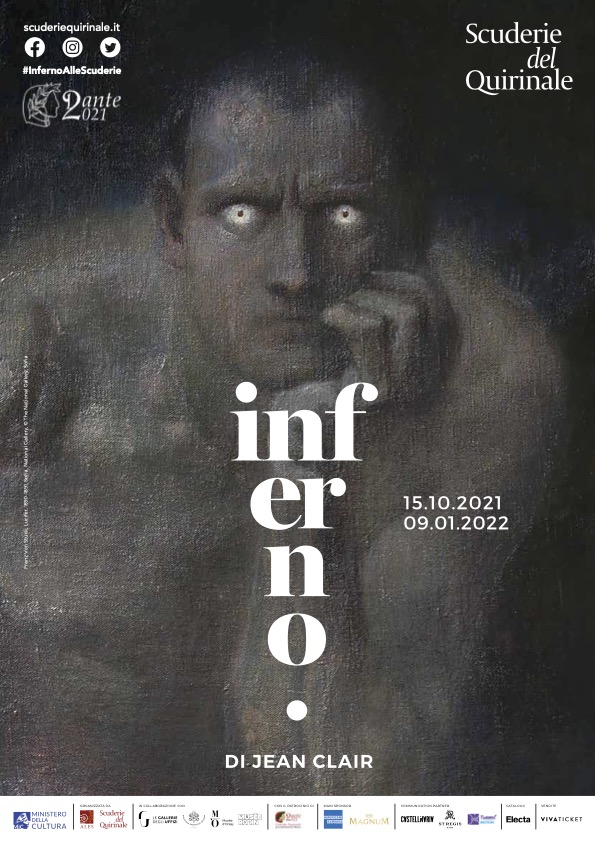Hell on Earth: the genocide
Anton Zoran Mušič We are not the last Gorizia, Comune di Gorizia
Towards the end of the war, in 1944, George Grosz painted a work entitled "Hitler in Hell". A historical figure, Hitler, is depicted as a giant. He is seated, prostrated, melancholic, on the brink of an abyss from which thousands of skeletons are about to emerge, like an army of vengeful Lilliputians – the dead that he has flung into the grave.
In the same year that Grosz paints this allegory, Zoran Musić in Dachau and Boris Taslitzky in Buchenwald draw what they see: piles of corpses. Many years later both artists will take up their sketches and transform them respectively into Musić's “We are not the last” series and Taslitzky's large-scale works, which you can see in the exhibition.
Jean Clair takes inspiration from these works to investigate the theme of the "all-destroying giant".
The Greek etymology clarifies that Giants were born from the Earth; primordial beings, they are united by a common hatred towards the Gods; they embody excess and violence.
Christian culture seems to have known giants as benevolent and protective. The Middle Ages had imagined that every future age would be a procession of tiny men who, in order to see, would have to hoist themselves on the shoulders of giants who had preceded them. This image in which the Ancients are giants and the Moderns are dwarfs illustrates a relationship to the past, be it profane or religious, which has dominated Western culture for centuries. But the Bible also tells of menacing giants, such as Goliath. Dante places six biblical and classical giants in the thirty-first canto of Hell.
At the dawn of the Renaissance, other giants are ambivalent. The figure of Saint Christopher, a protective giant, reprises the ancient motif of Heracles carrying Eros as a child on his shoulders. But his origin would be rather darker, a fifth-century Eastern saint with a dog's head and mute. This saint is a barbarian, whose features resemble the fantastical creatures of folk culture, the lycanthrope, the werewolf, the child-eating ogre... The reassuring and protective paternal strength, can also turn into the infernal power of a cannibalistic demon.
And Renaissance humanists willingly associated Satan with Saturn, an archaic and cannibal father, devourer of his own children.
In the eighteenth century the figure of the giant becomes a central theme. In literature, it will be Swift's Gulliver, or Voltaire's Micromega. Goya will offer the most powerful images with his melancholy Giant, with The Colossus and precisely with Saturn.
The figure of the cannibal God also evokes a medieval image well known in Italy: that of the melancholic and gigantic Devil, of the colossus seated in the depths of Hell. We find it depicted on the walls of the Camposanto in Pisa, in the mosaics of Torcello and Florence, or by Giotto in Padua.
This figure will have a rich and astonishing posterity in the twentieth century: the fathers of the people (the Duce, the Führer) will willingly take on the appearance of giants, guiding workers towards a bright future at first, only to lead them to ruin, crushing their victims beneath their bulk. An extraordinary gallery of monsters will then parade, in which the dictators of the time, Mussolini, Hitler, Stalin can be recognized.
At a certain point our relationship with the past was inverted. The idea of progress has become the driving force of human activity, the future a model to be pursued, and the past a memory to be destroyed. But when did it happen, exactly?
Under the revolutionary ideologies of the early twentieth century, the giant was no longer St Christopher ferrying the child across the water, or the embodiment of the wisdom of the ancients that broadens the vision of dwarfs. The cannibal ogre, the father of the people, fattens them up so that he can manage to better devour them. The giant makes a clean slate of the past and guides mankind, reduced to an indistinct mass of identical dwarfs, towards the final catastrophe of a hell on earth.



